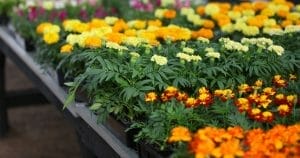Spring Landscape Planning

Think about budget
Landscaping costs can vary widely, so decide what you’re willing to spend. Do you want professional help or are you more of a DIY-er? Simply adding a few plants here and there is much easier and cheaper than taking down trees or removing existing shrubs. But if you need a complete overhaul, knowing your budget in advance will help you to determine what you can afford.
Know the climate
Not only do you need to understand our geographic location here in New England, but also the climate in your own yard. Choose plants appropriate for how much sun and shade different parts of your lawn receive during the day. If you’re not sure, do some research to determine what types of plants will look great and thrive in your particular environment.
Visualize your best ideas
Clip landscaping images from magazines, bookmark online images into your Pinterest boards, take a walk or drive around your community to see what sparks your attention. Think about your past gardens and which plants were successes and which ones were not. Consider how much maintenance you’re willing to take on. Are there new plants you want to try this year? Once you’ve compiled a handful of ideas, you’ll likely notice patterns and styles that appear over and over again as your favorites.
Map it out
Take photos of the area you plan to transform – or perhaps just lightly spruce up – and draw it out with rough measurements. What size and shape is the area? Match it up to the ideas you’ve pulled from your vision board and watch it start to come together.
You’ll also want to plan for growth and know how large the plants will grow when they reach maturity. Take note of the height and growth requirements on the pots of most plants when you purchase them. Another consideration is how much space you will need for walking around plantings, and place foliage clear of walkways.
Consult with a pro
The late winter and early spring tends to be a slow time for landscapers and garden design centers, so take the opportunity to consult with their experts before their time gets booked. Often, garden centers will provide some free or low-cost guidance to help you determine what will work best in your yard. If you have a chance to speak with one, share your vision board and plans, and start to build a definite list of what you’ll need and how you can bring it to life.
Shop or order early
Supply chain issues have been a challenge the past two years. Items may be hard to find, or you may experience shipping delays and inventory shortages, so you’ll want to purchase everything you need as soon as you can. It’s not a bad idea to have a plan B for any items that may not be available or ready in time. This even includes seeds for your garden, which proved hard to find in some areas.
Ready to plot the best garden ever? What are your favorite colors, plants and flowers that you’d recommend? Let us know!